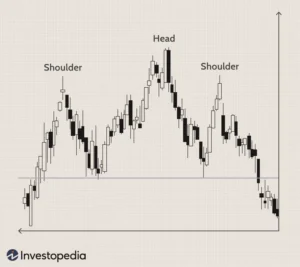
Welcome to our investment strategies section! Whether you're a novice investor or an experienced market participant, you'll find valuable information here on the various strategies that may be of interest to you.
What are investment strategies?
Investment strategies are a plan or method by which investors seek to maximise their returns and minimise their risks. The choice of strategy depends on the investor's objectives, risk tolerance and time horizon.
What is investment style?
Investment style refers to how an investor puts his strategy into practice, including the asset classes and instruments he uses.
Basic investment concepts
Basic investment concepts
- Shares (Stock) - A part of the ownership of a company that represents ownership rights in the company.
- Stock Market - A market where shares are traded.
- Stock Index (Stock Index) - A set of shares used to measure the general direction of the market.
- Active Investing (AII) - An investment strategy that seeks to outperform market returns through active trading.
- Stock Exchange - An organisation that allows trading in shares.
- Deflation - Overall decline in prices over time.
- Dividend - The share of the company's profits paid to shareholders.
- ETF (Exchange-Traded Fund) - An exchange-traded fund that replicates a particular index or asset.
- Retail Investor (Retail Investor) - An individual who invests their own money.
- Initial Public Offering (IPO) - Initial public offer of the company's shares on the stock exchange.
- Leverage - Use of borrowed funds to increase investments.
- Diversification (Diversification) - Allocating investments between different assets to reduce risk.
- Inflation (Inflation) - Overall price increases over time.
- Mutual Fund (Mutual Fund) - A fund that pools money from several investors and invests it in different assets.
- Investment Manager (Asset Manager) - A professional who manages an investment portfolio.
- Co-financing (Co-financing) - The participation of several investors in the financing of an investment.
- Co-financing (Crowdfunding) - Raising capital from several small investors.
- Capital Gain - Gains on the sale of assets when the sale price exceeds the purchase price.
- Capital Loss (Capital Loss) - Losses on the sale of assets if the sale price is lower than the purchase price.
- Liquidity - The ability to quickly and easily monetise assets.
- Economic Cycle (Economic Cycle) - Periodic change in economic activity.
- Put Option - The right, but not the obligation, to sell an asset at a fixed price in the future.
- Nominal Value (NPV) - The value of assets that does not take inflation into account.
- Net Owner's Equity (Owner's Equity) - The value of assets less liabilities.
- Call Option (Call Option) - The right, but not the obligation, to buy property at a fixed price in the future.
- Passive Investing (PI) - An investment strategy that tries to mimic market returns.
- Principal Investor (Institutional Investor) - A large investor, such as a pension fund or insurance company.
- Portfolio - The pool of investments held by an investor.
- P/E ratio (Price-to-Earnings Ratio) - The relationship between a company's share price and its profits.
- Real Value - The value of assets that take account of inflation.
- Time Value of Money (TVM) - The concept that the value of money changes over time.
- Risk (Risk) - The potential loss or fluctuation in the return on an investment.
- Venture capital - Investment in early stage companies.
- Risk-Reward Ratio (RRR) - Ratio between investment risk and potential return.
- Futures Contract - A contract that commits you to buy or sell an asset at a fixed time in the future at a fixed price.
- Return on investment (ROI) - A measure of return on investment, expressed as a percentage.
- Production (Return) - Percentage of profit or loss earned on the investment.
- Market Capitalization (Market Capitalization) - The total value of the company based on the market price.
- Bond (Bond) - A debt instrument where the issuer agrees to pay interest and principal over a specified period.
- Volatility - Fluctuations in the value of the investment over time.
Categories of investment strategies
Investment strategies can be categorised in several ways. Some of the more common categories include time horizon, risk tolerance, investment style and specific tactics. Below are some examples of different strategies to help you understand their diversity.
Investment styles
Active investing
Active investing involves researching and selecting the market and individual stocks in an attempt to find undervalued assets and earn above-average market returns. Active investors often make trades and try to take advantage of market fluctuations to maximise profits.
Pros:
- Potential for higher returns: With good analysis and the right timing, active investing can offer higher returns than the market average.
- Ability to adapt to market situations: Active investors can react quickly to market changes and adjust their portfolio accordingly.
Disadvantages/Risks:
- Needs a lot of time and knowledge: Successful active investing requires constant market monitoring, analysis and knowledge.
- Higher trading costs: Frequent trading can lead to higher commissions and other transaction costs.
- Higher risk of making the wrong decisions: Incorrect analysis or timing can lead to significant losses.
Passive investing
Passive investing focuses on tracking the average return of the market, for example through index funds that mirror a broader market index such as the S&P 500 or OMX Tallinn. Passive investors buy and hold assets for longer periods, reducing the need for frequent trading.
Pros:
- Lower costs and taxes: Passive investing involves fewer transactions, which reduces commissions and the tax burden.
- Simpler and less time-consuming: Because passive investing does not require constant market monitoring, it is simpler and less stressful.
- Lower risk: Passive investing spreads risk more broadly by tracking the average market return.
Disadvantages/Risks:
- Limited possibility to cross the market: Passive investing follows the average return of the market, which may limit the possibility of higher returns.
- Less flexibility: A passive strategy may not allow for rapid adaptation to market changes.
The choice between active and passive investing depends on your financial goals, risk tolerance and time resources. Each approach has its advantages and disadvantages, and many investors use a combination of both styles in their portfolios to maximise returns and minimise risk.
Allocation of time
Introduction
When choosing an investment strategy, it's important to consider the time horizon, i.e. how long you plan to hold your investment. Time horizon refers to investing for varying periods of time, which directly affects your risk tolerance and return expectations. The time horizon of an investment is one of the most important factors that will determine the way in which your investment portfolio is constructed and managed.
The time breakdown generally falls into two main categories: long-term and short-term investment. Both categories have their advantages and disadvantages and are suitable for different purposes and investor types.
Long-term investing
Long-term investing focuses on holding assets for years, or even decades, with the aim of maximising returns over the long term. This strategy often includes pension funds, real estate and quality stocks.
Pros:
- Potentially higher returns over time: Historically, long-term investments such as equities have offered higher returns than short-term investments.
- Less trading costs and taxes: Longer-term investments reduce the costs and taxes associated with frequent trading.
- Less stress and emotional strain due to market volatility: Long-term investors do not need to worry about daily market fluctuations.
Disadvantages/Risks:
- Longer waiting time for income: The benefits may only become apparent after years or decades.
- Market risks and business cycles can affect returns: Economic crises and market volatility can temporarily affect long-term returns.
Short-term investment
Short-term investing involves buying and selling assets over a shorter period of time, usually a few months or a year, with the aim of taking advantage of market fluctuations and making a quick profit. This strategy is well suited to speculative investing and market timing.
Pros:
- Opportunity to make a quick profit: Short-term investing can offer an opportunity for quick returns if market fluctuations are skilfully exploited.
- Flexibility to quickly change the investment portfolio: Short-term investors can quickly adjust their portfolio to market conditions.
Disadvantages/Risks:
- Higher risk and volatility: Short-term investing is often riskier and market volatility can lead to large losses.
- Higher trading costs and taxes: Frequent transactions increase trading costs and the tax burden.
- More time spent monitoring the market: Successful short-term investing requires constant market monitoring and analysis.
The choice between long-term and short-term investing depends on your financial goals, your risk tolerance and the time you are willing to commit to investing. Each strategy has its place and usefulness, depending on the investor's individual needs and circumstances.
Risk tolerance and diversification
Scattering
Diversification means spreading investments across asset classes and sectors to reduce risk. This strategy helps to protect the portfolio from market volatility.
Pros:
- Reduces risk and volatility
- Offers more stable returns
Disadvantages/Risks: - Opportunity for lower returns
- Needs a broad awareness of different asset classes
Dollar cost averaging (DCA) and Value averaging (VA)
Dollar cost averaging (DCA)
DCA involves regular, fixed-amount investments regardless of market prices. This strategy helps reduce the risk of market timing and averages the cost of investments over time.
Pros:
- Reduces market timing risk
- A simple and disciplined approach
Disadvantages/Risks:
- Possibly not taking advantage of the best opportunities of market downturns
Alternative: A one-off investment where the entire amount is invested at once in an attempt to time the market low.
Read more in our article 'Dollar Cost Averaging: investing without forecasting'
Value averaging (VA)
Value Averaging (VA) is an investment strategy similar to Dollar Cost Averaging (DCA), but with some differences. The goal of VA is to keep the portfolio on a certain upward trajectory by investing more when the market is down and less when the market is up. Here are the principles of this strategy and some similar strategies:
Value Averaging involves assigning a fixed growth rate to a portfolio and adjusting investments accordingly. For example, if the goal is to increase the value of the portfolio by $1,000 each quarter, more is invested if the portfolio has declined and less if it has increased.
Value investing vs. momentum investing
Value investing
The aim of this strategy is to find stocks that are undervalued and buy them, expecting their value to increase over time. This strategy requires careful analysis and patience. A well-known value investor is Warren Buffett.
Pros:
- Opportunity to buy shares at a bargain price
- Potential for high returns
Disadvantages/Risks:
- Requires a lot of time and knowledge
- Higher risk of making the wrong decisions
Momentum investing
Momentum investing, which focuses on stocks that have recently shown strong upward momentum in the hope that the trend will continue.
Investing interest
Investing in Inters
Compound interest is a concept where the interest earned earns interest, increasing the value of the investment exponentially over time. It is a key element of long-term investing.
Pros:
- Exponential growth in the long term
- Well suited for long-term investments
Disadvantages/Risks:
- Takes time to see noticeable results
- Requires discipline and patience
Alternative: Simple interest, where interest is earned only on the amount initially invested, not on the interest earned.
Growth interest
The focus will be on companies with high growth potential. Growth investors look for companies that have the potential to grow rapidly in the future, even though they may be overvalued now.
Index tracking (Index investing)
Investing in index funds that track market indices such as. S&P 500. This allows for a diversified investment at low cost and reduces the risk of selecting individual shares.
Investing in arbitrage
It looks for price differences between different markets or between related assets in order to achieve a risk-free profit.
Short selling
Shares are borrowed and sold immediately, in the hope that their price will fall and they can buy them back later at a lower price, making a profit in the meantime.
Read more in our article 'Shorting - an investment strategy for the bold'
Options trading (Options trading)
Options are traded which give the right (but not the obligation) to buy or sell an asset at a fixed date and price. Call options allow you to buy and put options allow you to sell.
A selection of articles related to our investment strategies
-
Beginner investor, Part 1. How to get started successfully investing small amounts.
-
Property flipping. How to ensure success? 4 aspects and risks
-
Types of income, Part 1. Passive income
-
Financial market trends, Part 3. The crab market: how to make money when the market is stagnant
-
Financial market trends, Part 2. The bull market: how to invest wisely in a bull market
-
Financial market trends, Part 1. Bear market: how to find opportunities in falling markets
-
How fundamental analysis can help you select valuable companies. 3 reports to follow.
-
Technical analysis: how can you predict stock prices using charts? 3 basic indicators
-
Portfolio optimisation: 4 strategies to achieve the best balance between risk and return
-
Comparing European pension systems: how to plan your retirement wisely?
-
Put together your investment plan: 6 things to know as a beginner
-
Diversification of investments: the road to a more secure future












